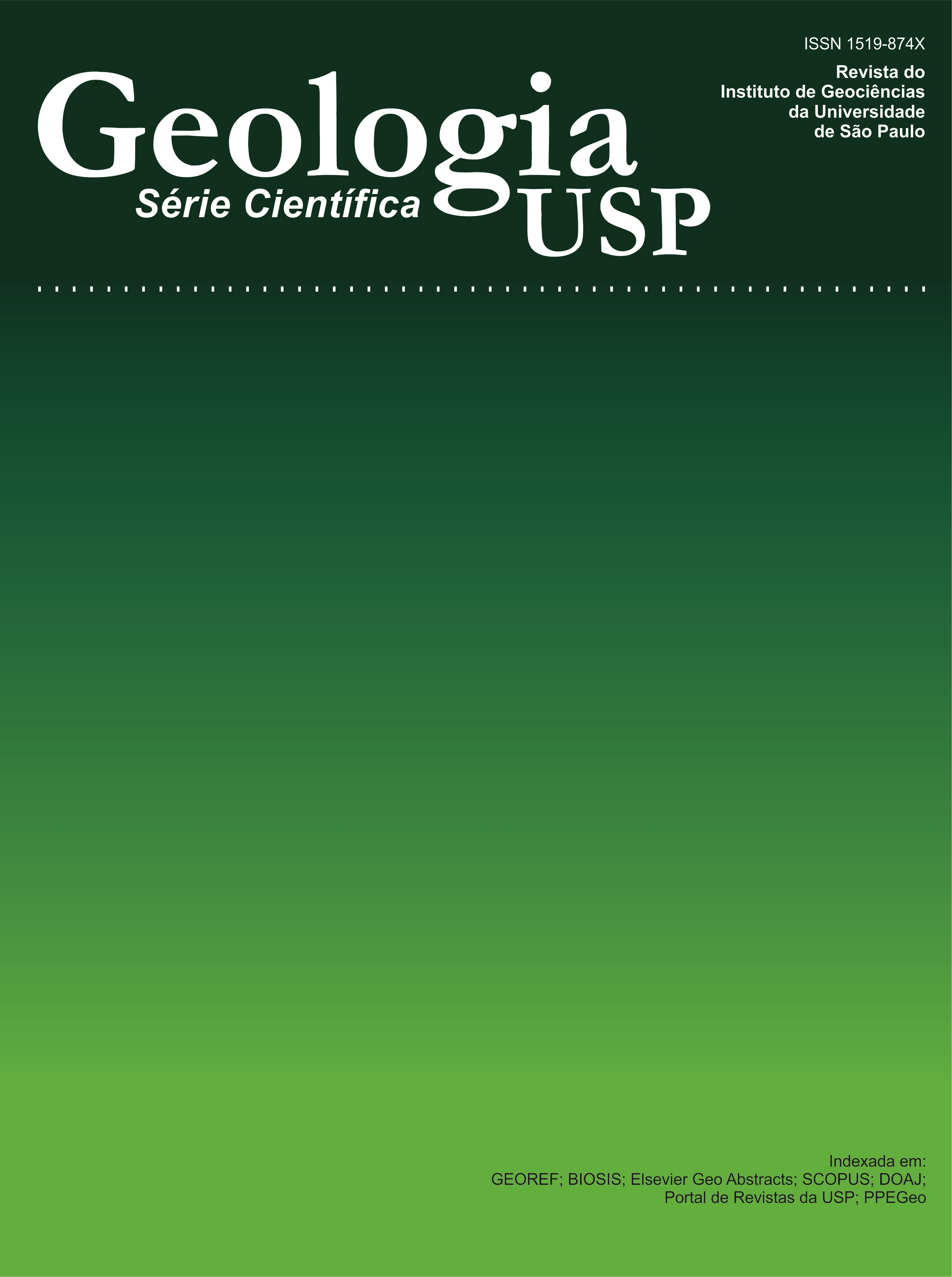The orosirian-statherian sequence and transpressive geometry in Santa Maria de Itabira, Minas Gerais
DOI:
https://doi.org/10.5327/Z1519-874X201400020006Abstract
The metasedimentary rocks cropping out in the surroundings of the township of Santa Maria de Itabira (MG), comprise Orosirian quartzites herein informally named Pedra Branca Quartzite and the Statherian banded iron formation bearing sequences at the eastern border of the southern Espinhaço Range. They define an allochthonous shear-zone-bound inlier block, between slices of Archean granite-gneissic rocks of Dona Rita Complex, intruded by the 1729 ± 12 Ma old Borrachudos Granite, Neoproterozoic Mafic Rocks (Pedro Lessa Suite) and mesozoic diabase dikes. The structure of the inlier is controlled by three families of folds D1, D2 and D3 nucleated in three deformational phases F1, F2 and F2' associated to the oblique shear zones development in a transpressive environment during one of the Brasilian Orogenies.Downloads
Download data is not yet available.
Downloads
Published
2014-06-01
Issue
Section
Articles
License
Authors who publish in this journal shall comply with the following terms:
- Authors keep their copyright and grant to Geologia USP: Série Científica the right of first publication, with the paper under the Creative Commons BY-NC-SA license (summary of the license: https://creativecommons.org/licenses/by-nc-sa/4.0 | full text of the license: https://creativecommons.org/licenses/by-nc-sa/4.0/legalcode) that allows the non-commercial sharing of the paper and granting the proper copyrights of the first publication in this journal.
- Authors are authorized to take additional contracts separately, for non-exclusive distribution of the version of the paper published in this journal (publish in institutional repository or as a book chapter), granting the proper copyrights of first publication in this journal.
- Authors are allowed and encouraged to publish and distribute their paper online (in institutional repositories or their personal page) at any point before or during the editorial process, since this can generate productive changes as well as increase the impact and citation of the published paper (See The effect of Open Access and downloads on citation impact).
How to Cite
Carvalho, R. P. de, Rosière, C. A., Rolim, V. K., Lana, C. de C., & Santos, J. O. S. (2014). The orosirian-statherian sequence and transpressive geometry in Santa Maria de Itabira, Minas Gerais . Geologia USP. Série Científica, 14(2), 111-120. https://doi.org/10.5327/Z1519-874X201400020006





